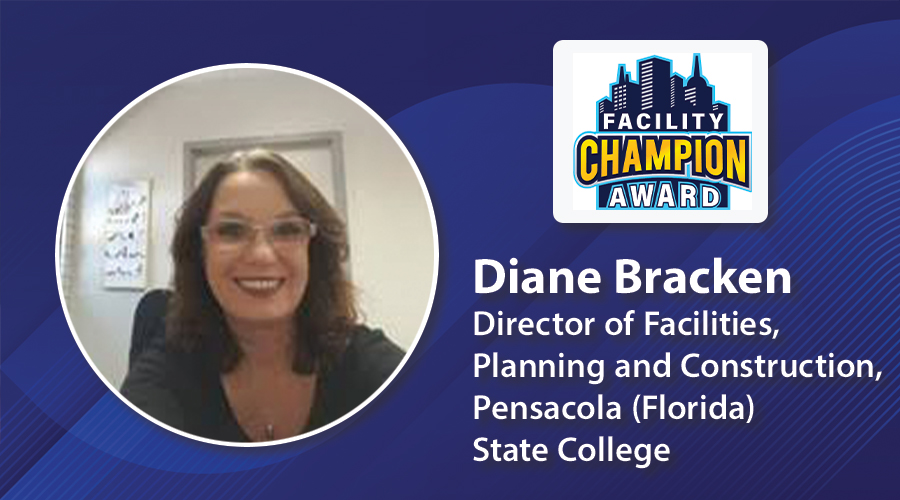
What's New and Different in LEED v5?
LEED v5 introduces new credits and expands upon existing ones all while retooling the scoring system to be more transparent. October 10, 2025
By Jeff Wardon, Jr., Assistant Editor
There are a few different building standards and certifications available for facility managers, including the Leadership in Energy and Environmental Design (LEED) green building certification system and standard, which was developed by the U.S. Green Building Council (USGBC) and first introduced in 1998.
LEED has undergone a few updates and revisions, leading up to the most recent introduction of the certification, LEED v5, which signals a shift toward more transparent performance metrics and introduces new credits, says Kat Wagenschutz, director, technical solutions at the USGBC.
The previous version, LEED v4.1, had 90 percent of its credits as performance based, meaning that they used data to determine credit compliance and point achievement. This is largely the same in LEED v5, however, the calculation used in LEED v4.1 wasn’t easily understood by project teams.
“The difference is with those credits and before, some of them used a calculation that was not transparent,” says Wagenschutz. “Project teams weren’t able to understand how they would perform in LEED until they entered their data into Arc. With v5, we were very intentional and wanting the calculations, the performance metrics, to be transparent so the project teams would know how they perform without having to enter all their data into Arc.”
Instead of using an Arc-specific calculation or algorithm, LEED v5 uses ones such as Energy Star or ASHRAE 100 to determine performance, Wagenschutz says.
Changes in the scoring system and points
In LEED v4.1, points were mainly earned by showing actual performance such as how efficient a building was. LEED v5 is still performance-focused with 90 points available for meeting performance targets or going above and beyond.
However, LEED v5 also has 20 points available for selecting certain strategy-based credits, according to Wagenschutz. That means there’s more flexibility to earn points based on what the facility manager wants to do. This gives project teams more options to boost their scores through strategies that make sense for them.
What used to be the “Innovation” category has been changed to “Project Priorities in Innovation.” This section offers up 10 points, which can be earned through things such as:
- Regional priorities (important issues in each area)
- Pilot credits (testing out new ideas)
- Innovation (unique solutions)
- Having a LEED Accredited Professional (AP) on the team
- Doing something exceptionally well (exemplary performance)
The points can still be tied to performance; however, they can also be earned by doing something innovative or experimental.
“I think that the scoring opportunities are enhanced because they have more optionality and they have more points available to them,” she says. “We’ve gone from 100 total points to 110.”
Key focus areas
Resilience, while always being a focus in prior versions, now has its own prerequisite and credit. For Operations & Maintenance (O+M) and Building Design & Construction (BD+C) projects, LEED v5 requires two assessments: a resilience assessment to identify vulnerabilities over time, and a human impact assessment to consider how the building affects people.
Another focus for O+M is “Human Impact,” which zeroes in on the working conditions for low-wage operational staff. Managers are asked to assess whether those workers earn a living wage, have benefits, can unionize and work in healthy conditions.
There are also follow-up credits for Human Impact:
- Operational planning for resilience (this is done after the resilience assessment)
- Worker safety and training (done after the human impact assessment), which enables projects to earn points by having the right safety programs and policies in place
Then there’s new and expanded credits for indoor environmental quality as well. The facility stewardship performance credit builds on LEED cleaning assessments while adding a new focus on overall facility maintenance. The new resilience spaces credit rewards projects that create flexible and safe indoor environments. That includes strategies such as ventilation to reduce exposure to airborne illnesses and protection from outdoor smoke.
Lastly, a new decarbonization credit that wasn’t available in LEED v4.1 has been added in. Decarbonization is now one of the three main system goals in LEED v5, says Wagenschutz, and it applies to all major LEED rating systems: Operations & Maintenance (O+M), Building Design & Construction (BD+C) and Interior Design & Construction (ID+C).
The actual credit is called “Decarbonization and Efficiency Plans,” and it’s worth four points, making it the heaviest-weighted credit in LEED v5. However, there’s also a prerequisite that requires projects to understand their carbon emissions over time and consider how on-site combustion affects long-term decarbonization goals.
“We wanted to really be an educational leader in moving the market towards creating decarbonization plans and understanding what a decarbonization plan is in the process of decarbonizing over years, if not decades,” Wagenschutz says.
Jeff Wardon, Jr., is the assistant editor of the facilities market.
Next
Read next on FacilitiesNet












